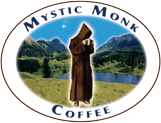Your Cart is Empty
just as satisfying as the dark roasts I usually drink
Best decaf coffee I ever have had. Been a subscriber for years, and brother monks are very nice, patient, and accommodating to my changing schedules of delivery.
Thank you very much Mystic Monk❤️
Won't drink any other coffee. This is the best! Been drinking for over 10 years & give as gifts.




